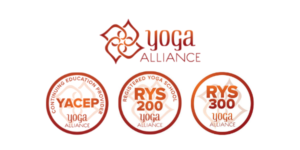
In the vast world of yogic practices, Kapalbhati Pranayama stands out as one of the most powerful and transformative techniques. Known as the “skull-shining breath” in Sanskrit (Kapala meaning skull, and Bhati meaning to shine or illuminate), Kapalbhati is a dynamic breathing exercise that cleanses the mind, body, and spirit. It is revered for its ability to detoxify the system, increase energy levels, and enhance mental clarity.
Whether you’re a seasoned yogi or new to pranayama, offers profound benefits that can elevate your well-being and spiritual journey. In this blog, we’ll explore the origins, technique, and benefits of Kapalbhati, and how incorporating it into your daily routine can bring about transformative results.
The Origins of Kapalbhati
Kapalbhati is deeply rooted in Hatha Yoga and is often classified as a shatkarma (one of the six purification techniques). It was practiced by ancient yogis as a way to cleanse the body and prepare the mind for meditation and spiritual practice. By activating the breath in a rhythmic, forceful way, Kapalbhati works to purify the nadis (energy channels) and balance the body’s subtle energies.
The technique was first mentioned in ancient yogic texts like the Hatha Yoga Pradipika, where it was recommended for those seeking mastery over the breath and mind. Today, it has gained popularity in modern yoga practices due to its therapeutic and energizing effects.
How to Perform Kapalbhati Pranayama
Kapalbhati is a pranayama technique that involves a series of quick, forceful exhalations followed by passive inhalations. It is essential to practice Kapalbhati on an empty stomach and in a quiet, comfortable environment.
Here’s how to perform:
- Sit Comfortably: Begin by sitting in a comfortable position with your spine straight. You can sit on a yoga mat in Padmasana (Lotus Pose) or Sukhasana (Easy Pose).
- Focus on Your Breath: Close your eyes and take a few deep breaths to center yourself.
- Exhale Forcefully: The focus is on the exhalation. Contract your abdominal muscles sharply as you forcefully expel air through your nose. The inhalation happens passively, without any effort.
- Continue the Rhythm: Repeat the process at a steady pace, focusing on each exhalation. Start with 20-30 breaths and gradually increase the count as you build stamina.
- Rest and Observe: After completing one round, relax and observe the sensations in your body and mind. You can practice 2-3 rounds, depending on your comfort level.
Benefits
Kapalbhati is not just a physical exercise—it is a powerful tool for mental clarity, emotional balance, and spiritual growth. Here are some of the key benefits:
- Detoxification and Cleansing: Helps remove toxins from the respiratory system, lungs, and digestive tract, purifying the body at a deep level. It is particularly effective in clearing out the sinuses and nasal passages.
- Improves Lung Function: By enhancing the capacity and strength of the lungs, supports better oxygenation of the blood, improving overall respiratory health.
- Boosts Metabolism: Regular practice of Kapalbhati stimulates the digestive system, promoting a healthy metabolism and aiding in weight management.
- Balances Energy Levels: Kapalbhati activates the solar plexus, which is associated with energy and vitality. This practice helps balance the body’s prana (life force), increasing energy levels and reducing fatigue.
- Enhances Mental Clarity: The rhythmic breathing technique of Kapalbhati clears mental fog, sharpens concentration, and enhances cognitive function. It is also known to relieve stress, anxiety, and depression by calming the nervous system.
- Supports Spiritual Growth: As a shatkarma practice, Kapalbhati purifies the nadis, opening the way for spiritual progress. It helps practitioners prepare for deeper states of meditation by calming the mind and balancing emotions.
Further Exploration
- Discover more pranayama techniques in our Comprehensive Guide to Yogic Breathing, where we delve into practices like Nadi Shodhana and Bhastrika.
- Explore the Origins of Hatha Yoga and how ancient practices like Kapalbhati form the foundation of modern yoga.
- Learn more about the health benefits of breathwork from experts at The Science of Breath, where scientific research meets ancient wisdom.
- If you’re interested in deepening your yoga practice, explore our Yoga Teacher Training Programs to understand how pranayama fits into a holistic yogic lifestyle.
How to Incorporate Kapalbhati Into Your Routine
Adding Kapalbhati Pranayama to your daily routine is simple, yet the effects can be profound. Here are some tips for incorporating it into your practice:
- Morning Practice: Perform Kapalbhati first thing in the morning to energize your body and clear your mind for the day ahead.
- Pre-Meditation: Use Kapalbhati as a precursor to meditation. It helps release physical and mental tension, making it easier to slip into deeper states of meditation.
- Post-Yoga Asana: Practice Kapalbhati after your yoga asanas to detoxify the body and balance energy before moving into relaxation or meditation.
- Start Slow: If you’re new, begin with a few rounds and gradually increase the duration as you become more comfortable with the technique.
Precautions and Contraindications
While Kapalbhati is a powerful practice, it is important to approach it mindfully. This pranayama is not recommended for individuals with high blood pressure, heart conditions, hernia, or those who are pregnant. Always consult with a certified yoga instructor or healthcare professional before starting any new practice, especially if you have any medical concerns.
Conclusion: Embrace the Light of Kapalbhati
Kapalbhati Pranayama is more than just a breathing technique—it is a transformative tool for cleansing, healing, and spiritual growth. As part of the rich tradition of Hatha Yoga, it offers profound benefits for the mind, body, and spirit. By incorporating Kapalbhati into your daily routine, you can unlock higher states of energy, mental clarity, and inner peace.
At Yoga Homehttps://yogahomewellness.com/ Wellness, we offer guided Kapalbhati sessions and workshops designed to help you master this powerful technique. Whether you’re looking to detoxify your system, boost your energy, or deepen your meditation practice, can serve as a bridge to a more vibrant, conscious life.
For more resources on pranayama, meditation, and yogic practices, explore our Yoga Blog, where we share insights and tips on living a balanced, yogic lifestyle. Let the light shine through your practice, illuminating your path to well-being and inner harmony.








